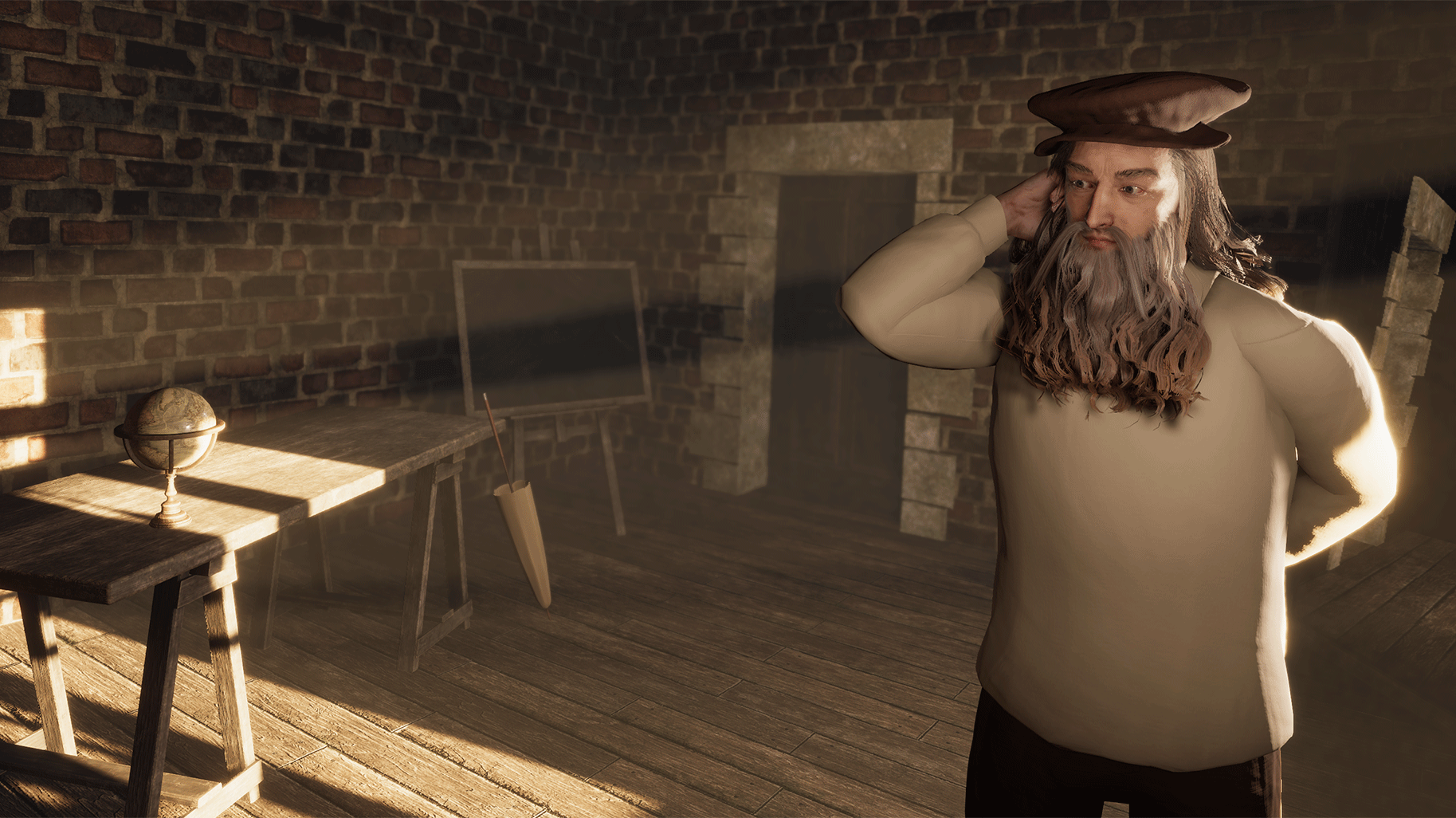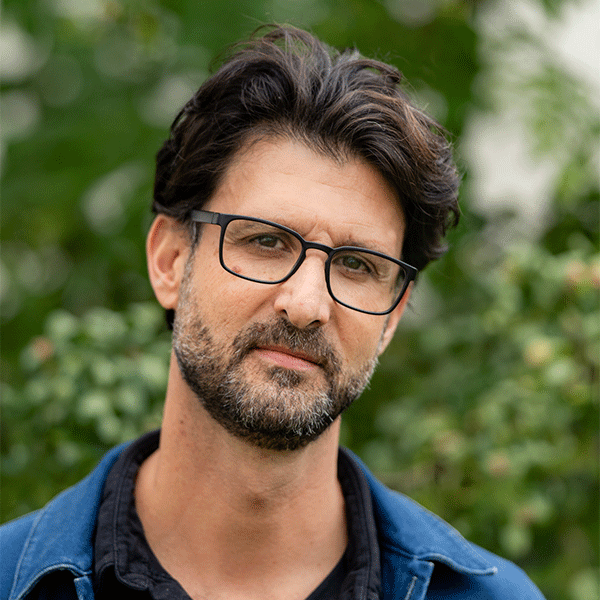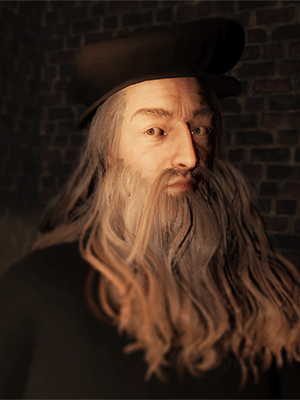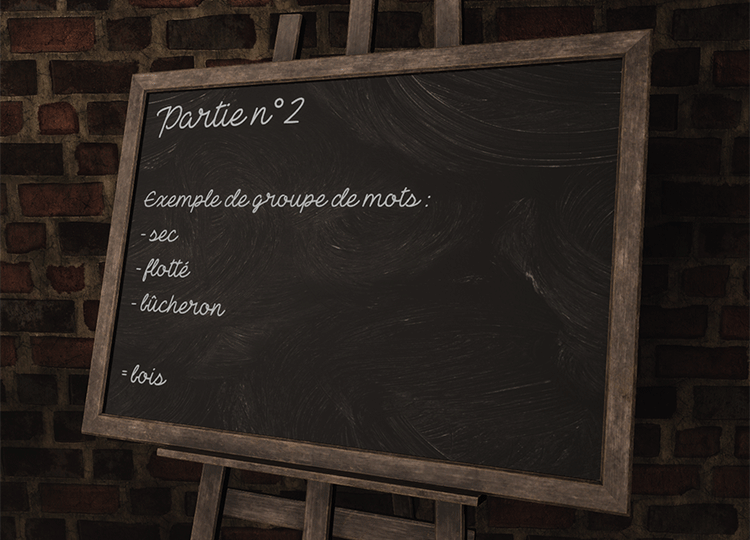
The impact of an avatar on creativity
In the brief history of virtual reality, scientists had previously observed users embodying avatars of Albert Einstein and Sigmund Freud. But no one had tried the experiment with Leonardo da Vinci and on creativity.
This was the unexplored route which researchers from the University of Rennes Inria Centre and the Laval Institute chose to go down. And their hunch was proved correct. Firstly because participants scored extraordinarily highly for creative performance on conceptualisation tasks, coming up with 47% more ideas than members of a control group embodying avatars which looked like them. But also because on other tasks those with an avatar of the Italian genius were actually less inspired, revealing the nuance in play.

Verbatim
It is rare to see such a contrast in effect”, said a delighted Anatole Lécuyer. “The Leonardo da Vinci group overperformed when it came to divergent thinking - generating as many ideas as possible - but underperformed when it came to convergent thinking - coming up with a solution to a given problem.
research director and head of the Hybrid project team at Inria centre at Rennes University
A collaborative project between the Laval Institute and Inria
The researcher's passion for this subject lies in the fact that the Hybrid project team’s main area of focus is 3D interactions with virtual environments. “Our aim is to understand how immersion technology either increases or decreases the extent to which people identify with an avatar. We also want to explore what impact avatars have and how they are used.”
Hybrid worked with researchers in virtual reality from the Laval Institute, who developed the avatar of Leonardo da Vinci, his studio, the objects needed for the exercises (a globe, a blackboard and a parasol), and the virtual reality system that was used, which featured motion capture technology.
“There was no real stumbling block from a technological point of view, but the project did require a lot of expertise in computer engineering and took up a lot of time, especially when it came to producing Leonardo da Vinci and optimising the background”, explains Geoffrey Gorisse, an assistant professor in virtual reality who coordinated the project on behalf of the Laval Institute.
The Proteus effect - how avatars influence our behaviour
Before selecting Leonardo da Vinci the researchers put his name on a shortlist of 15 famous people known for their creativity, including Elon Musk, Steve Jobs, Marie Curie and Frida Kahlo. They then gave this list to a group of 157 people who put the Italian artist in first place.
“This was a crucial step as our entire experiment was based on the Proteus effect”, says Anatole Lécuyer. “In virtual reality users’ behaviour can be altered by the characteristics of their avatars and the stereotypes associated with them. If you think Leonardo da Vinci was a creative genius then you feel more creative when using an avatar of him.”
What does it mean to embody an avatar?
If a user is to identify with their avatar then they have to “believe” that they have “embodied it”. There are three aspects to this. The first of these is appropriation, when you believe that the virtual body of the avatar is your own body. Then comes localisation, when you feel you are spatially situated within the body of the avatar, in the same area of the virtual scene. The third aspect is agency, where you feel as though you are controlling the actions of your avatar, including through motion capture technology
Coming up with alternative ways of using a globe and a parasol
For the experiment itself, 20 participants were given the Leonardo da Vinci avatar, while the other 20 were given an avatar which matched their body type and skin pigmentation. The researchers ensured that both groups had similar levels of creativity. The participants were then asked to put on their virtual reality headsets and complete three tasks on their own, two of which drew on divergent thinking.
The first thing they were asked to do was to come up with as many different ways of using a globe as they could: as a ball, cutting it in two and hollowing out both parts, incorporating it into a sculpture, etc. They were then asked to do the same for a parasol and to make 3D sketches of their ideas.
It was on the exercise with the globe that the participants with the Leonardo da Vinci avatar came up with 47% more ideas than the others”, explains Anatole Lécuyer. “Even if, on the whole, their ideas weren’t really any more original than those which the other group came up with.
Convergent thinking: a struggle for the Leonardo da Vinci group
The opposite was true for the convergent thinking activity, in which participants were asked to guess a word based on a set of three clue words: for the word “wood”, for example, the three clue words were “dry”, “drift” and “lumberjack”. The score was definitive: the Da Vinci group scored 38% lower than the other group.
One possible explanation for this is that convergent thinking draws on our own knowledge, education and experiences”, says Geoffrey Gorisse. “Using an avatar of someone else – in this case Leonardo da Vinci - may have interfered with this process.
The study raises many other questions. Why was there such discrepancy between divergent and convergent thinking ? How might the results have differed if the participants had worked together and not on their own ? What if they had been asked to work with Leonardo da Vinci instead of embodying an avatar of him ? And what if the group had been mixed instead of being all male ?
A first possible application: brainstorming sessions
The researchers are also looking ahead to how this research might be used in the future, including in brainstorming sessions :
The rise of virtual reality
The use of virtual reality is increasingly common in a professional context, whether this is in medicine (for rehab and for people with disabilities), professional training (for surgery, cardiac massage, assembling complex components, welding, painting, etc.), cultural heritage (virtual visits, archaeological studies), design and architecture (designing buildings), sport, video games or entertainment
but what virtual reality system would be best at stimulating creativity ? What recommendations would need to be made to the coordinators of these sessions ?
The Laval Institute is keeping a hold of the system used in the study for now, and is letting visitors (including students and colleagues) try it out for themselves. But it could well feature in general public events in the future. If you dream of giving your creativity a boost by becoming Leonardo da Vinci, even just for a few minutes, then you might soon get the chance !
Find out more
General public :
- « I am a Genius! Influence of Virtually Embodying Leonardo da Vinci on Creative Performance » - A two-minute tour of the virtual environment used in the experiment carried out by the University of Rennes Inria Centre and the Laval Institute (video), YouTube, 26/9/2023.
- « Assisting your brain with virtual reality » by Anatole Lecuyer – TEDxRennes (French video), YouTube, 25/10/2021.
- « Your brain is a superhero », talk by Anatole Lecuyer (French video), Espace des Sciences, YouTube, 15/1/2020.
Experts :
- Read the scientific paper by Geoffrey Gorisse, Simon Wellenreiter, Sylvain Fleury, Anatole Lécuyer, Simon Richir and Olivier Christmann, « I am a Genius! Influence of Virtually Embodying Leonardo da Vinci on Creative Performance », IEEE Transactions on Visualizations and Graphics, 2023.
- Another scientific paper on embodiment in virtual reality: « The Sense of Embodiment in Virtual Reality” Presence Teleoperators & Virtual Environments » 21(4), November 2012.

